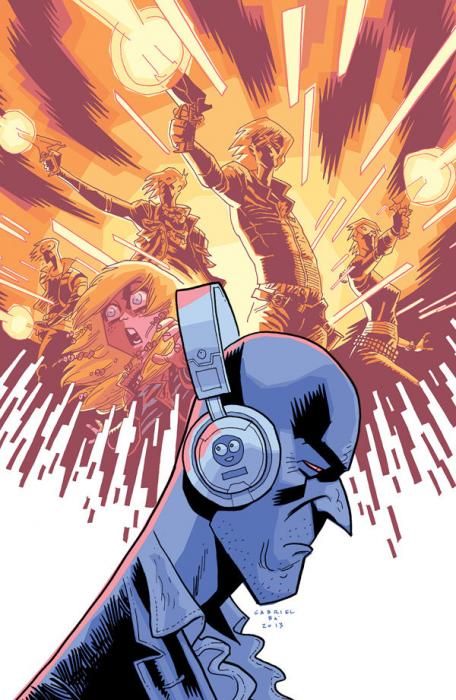"The True Lives of the Fabulous Killjoys" #2 by Gerard Way, Shaun Simon, and Becky Cloonan further defines the divide between the City and the Desert and the beliefs of the Ultra-Vs vs. those of the last remaining Killjoy.
Way and Simon's futuristic, post-apocalyptic story is spun out from the album "Danger Days" by My Chemical Romance, Way's former band. Unfortunately, Way and Simon err on the side of failing to provide readers who aren't already invested or acquainted with the Killjoys enough information to ground them in world of Battery City and the Desert. This is only the second issue, and their world-building comes across as jumbled and needlessly complicated.
"The True Lives of the Fabulous Killjoys" #2 begins with a dream or flashback in the mind of Scarecrow Korse. Over 22 pages, there seven changes in time and place. While this disjointed storytelling technique adds to the chaotic mood and the tension between the City and the Desert, it is also disorienting.
Moreover, the snippets of plot threads themselves aren't that original.
The sequence where a blue-haired girl battles with the bureaucracy for a life-saving battery is Kafkaesque in its futility and horror, but long lines and heartless indifference to individual lives are standard features of dystopias. In a similar way, Way and Simon's decisions regarding the central character simply called The Girl are irritating, because they haven't added anything to this standard trope of science fiction and fantasy. The Girl remains without a normal name because she is more an idea than a person, a "Chosen One" that is destined to do something special and so must be protected by a larger organization against villainous forces. The way that The Girl is protected from self-knowledge by her protectors for her own good is also cliche.
The central conflict is shades of nothing new, with the counter-culture resistance fighting the Man, otherwise known as Better Living Industries (B.L.I.) in the world of the Killjoys. The final scene of "The True Lives of the Fabulous Killjoys" #2 is a rallying of the troops speech by Val to his Ultra-Vs. Cherri Cola, an actual Killjoy to their wannabe-status, is dove to their hawk. This schism in the Resistance forces is an echo of M.L.K. vs. the Black Panthers, among other history lessons, but it lacks passion or deeper conviction. Way and Simon acknowledge the shallowness of the Ultra-Vs in the scene where they talk about their hair and nails. The problem is, the Killjoys themselves mean little more to the reader than the Ultra-V's.
The real delight of "The True Lives of the Fabulous Killjoys" is in the texture and details, and Way and Simon don't lack for innovation there. Their anthropological ideas are plausible and exciting in their fusion of old and new. Mailboxes for the Phoenix witch are an imaginative nod to rituals of grief. On the opposite tonal spectrum, the synesthesia-like concept of "the taste of amnesia" is perfect shorthand of the evils of the B.L.I. in its power and sterility. Cloonan's visuals of slick white nail polish are particularly well-matched to the script.
Cloonan's art is as attractive as always, especially in her variation in line and in the range of her facial expressions, and Jackson's colors are perfect in how they set up the warm, colorful desert against the white and great city. However, their combined clean, pop-like aesthetic is too pretty for a dystopian tale, and this deficit of realism further works against reader immersion into the stakes of potential civil war and also against identification with any of the characters.
So far, "The True Lives of the Fabulous Killjoys" feels like a film preview or music video. There are lots of interconnected themes, and Battery City itself is a cocktail of bright images and stylish people, but plotting, dialogue and characterization are neglected in favor of creating mood and atmosphere. It's still a compelling package of ideas and images, but Way, Simon and Cloonan may be relying too heavily on concept and style to carry the weight of narrative.

